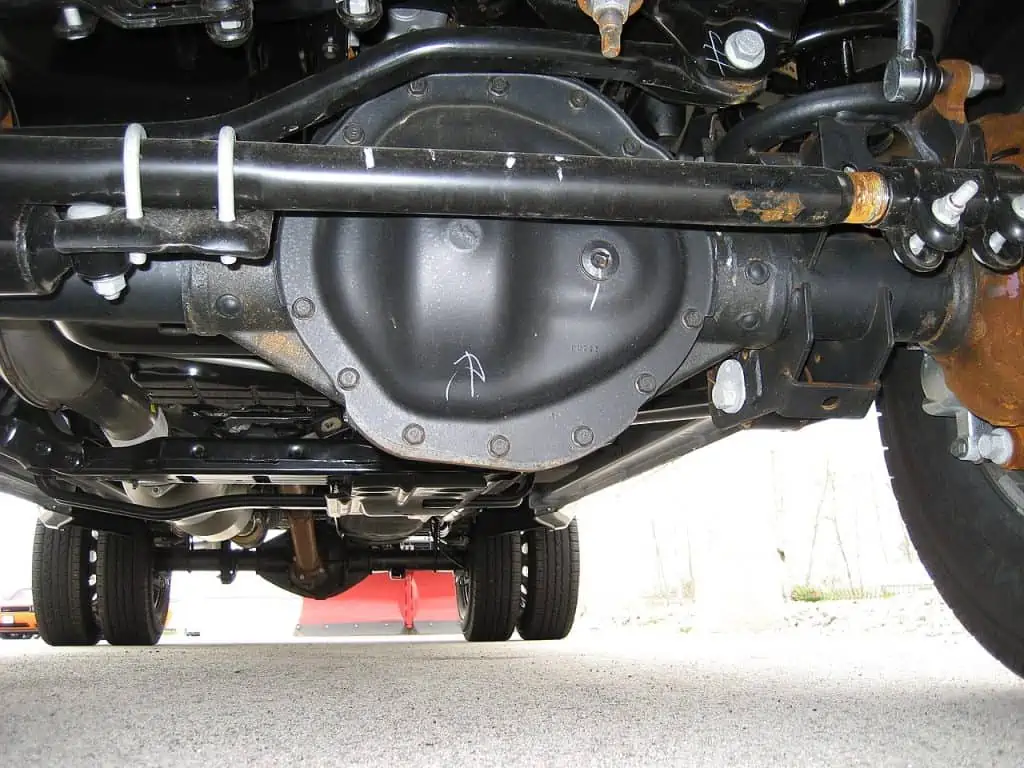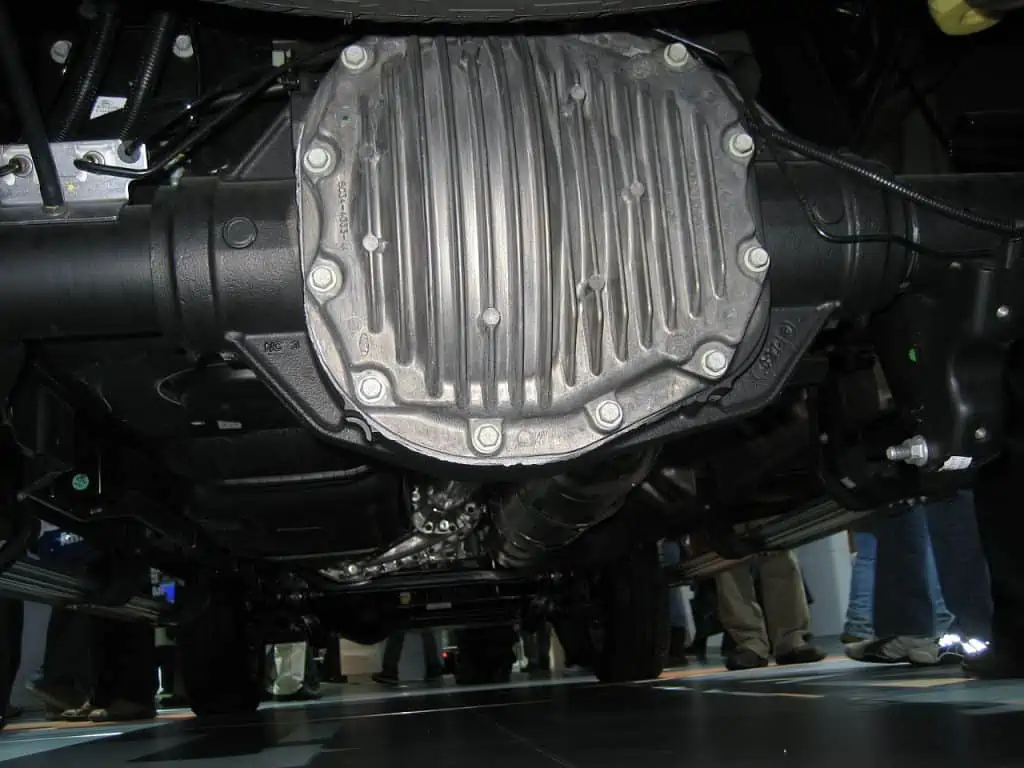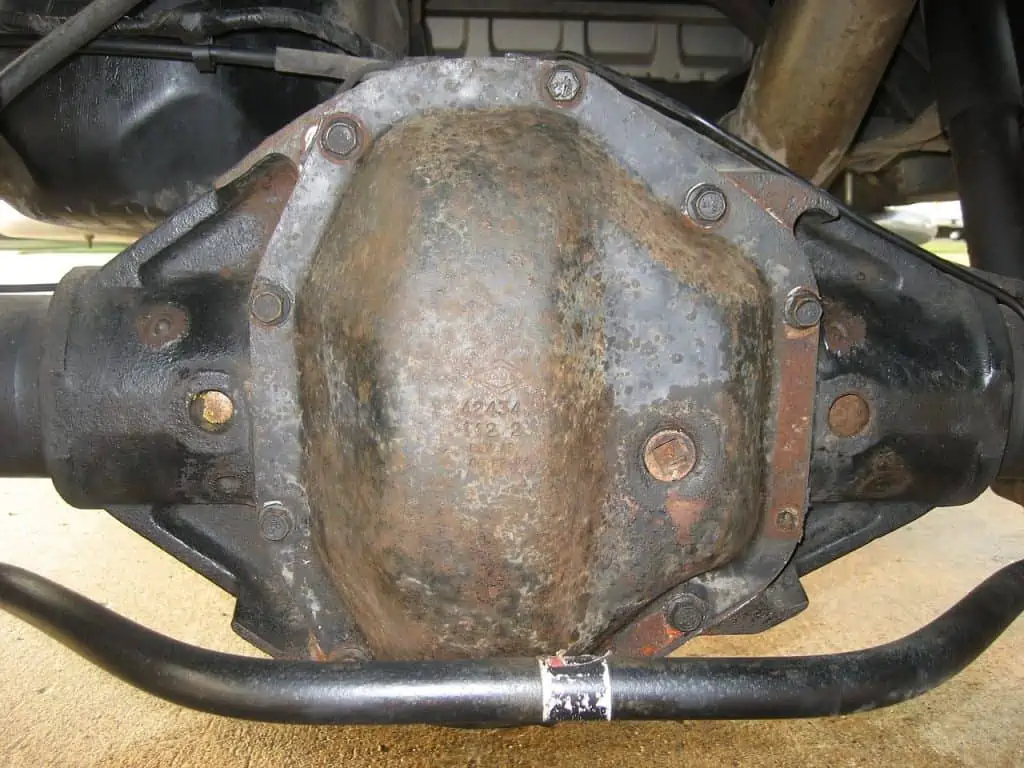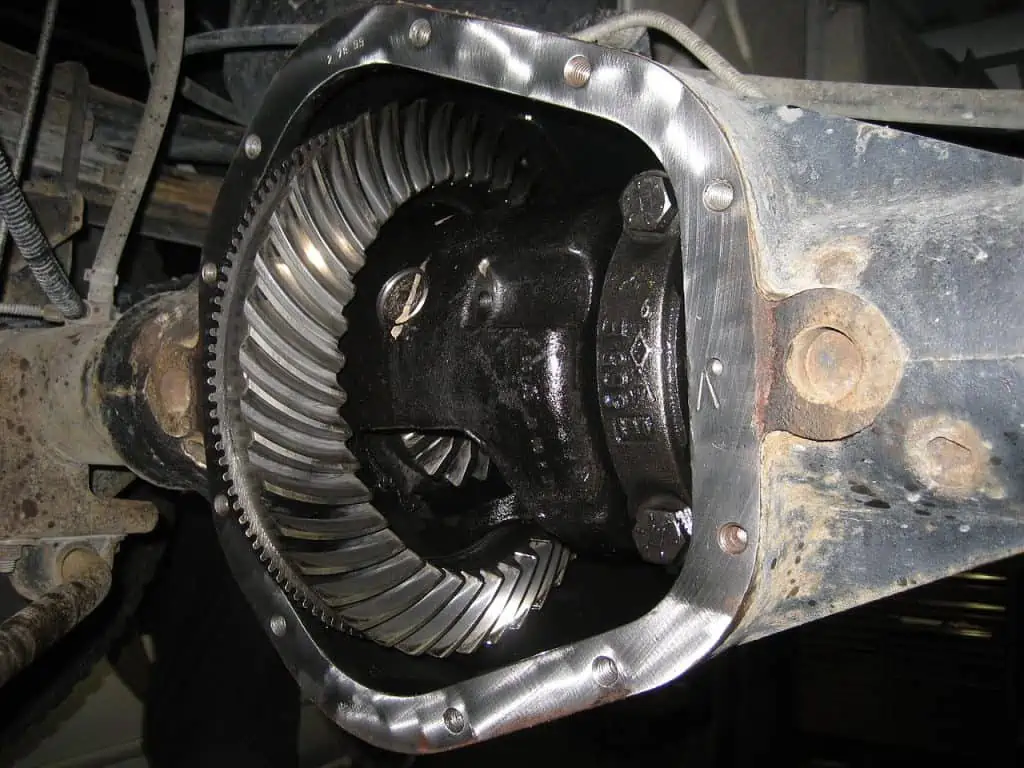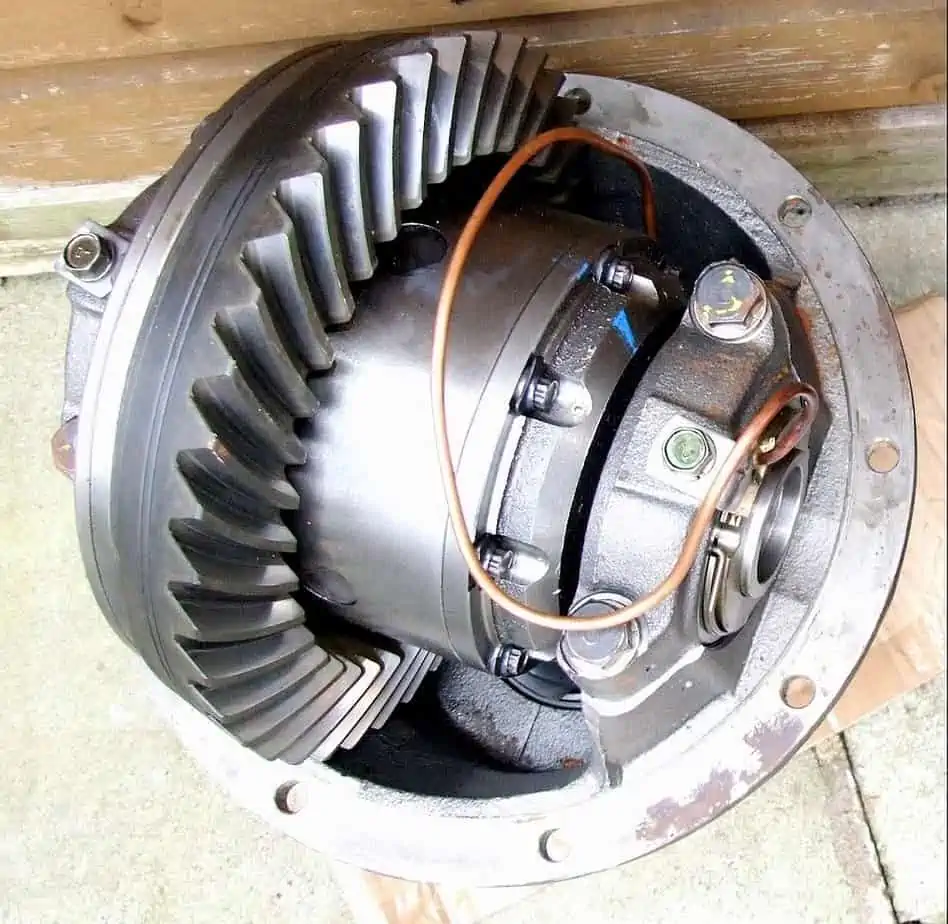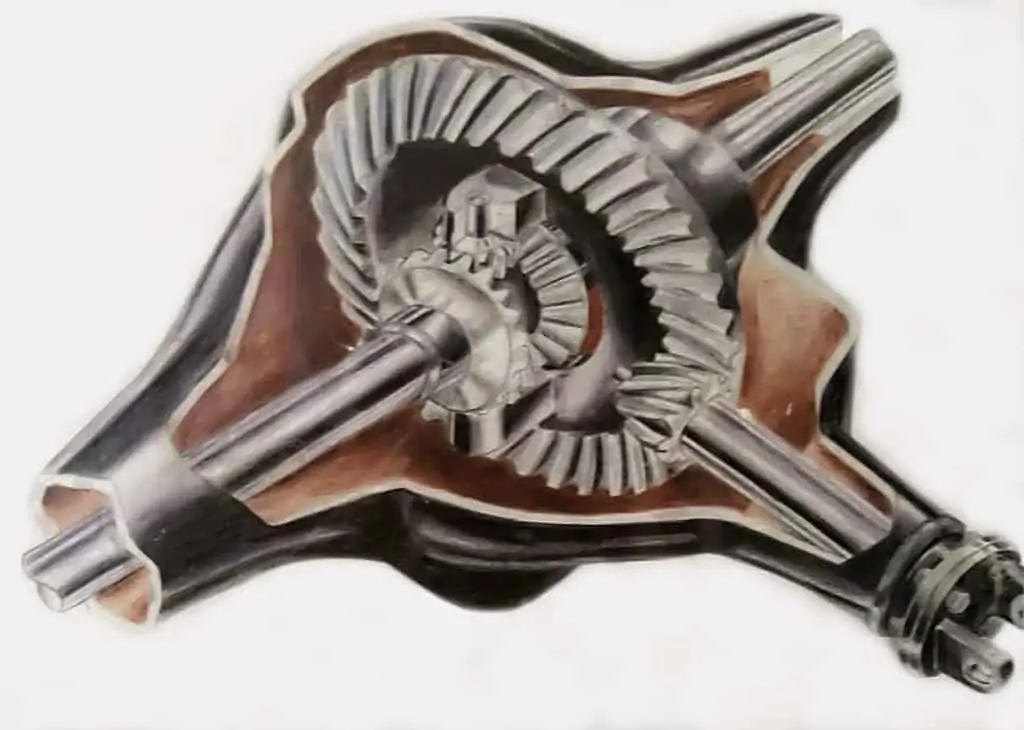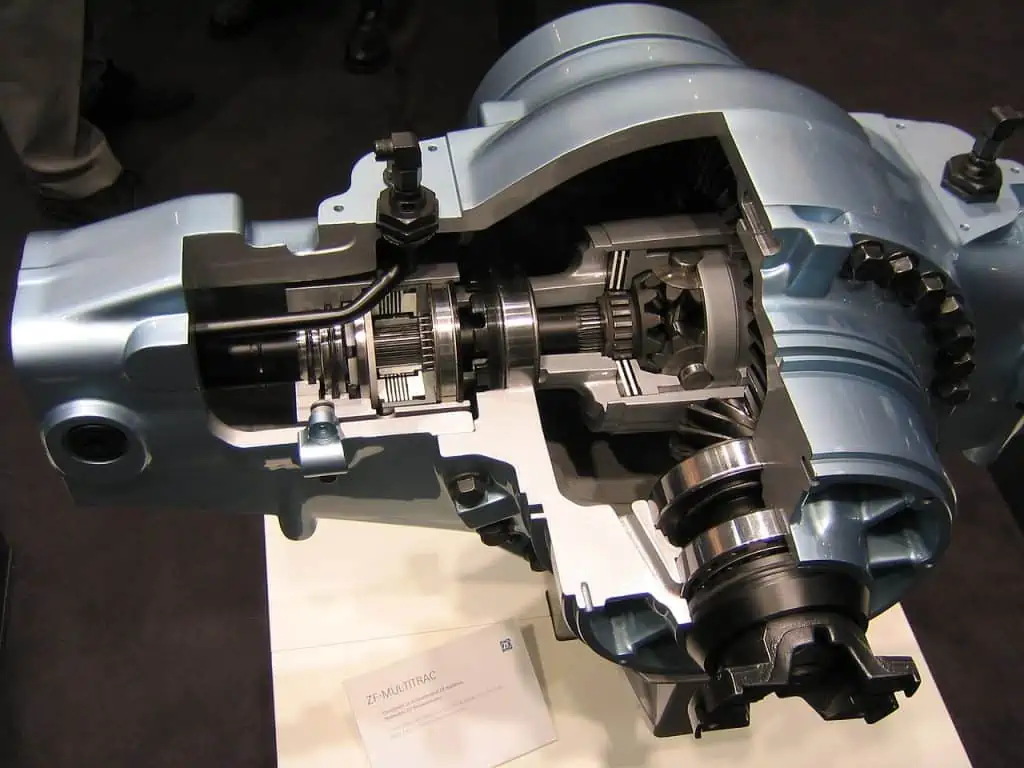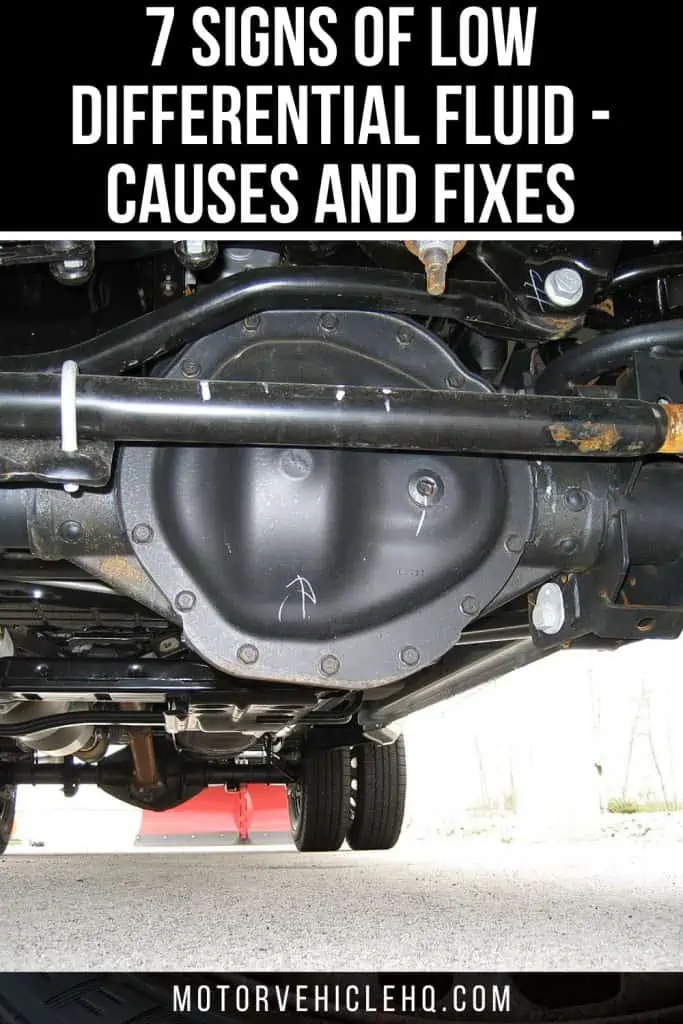You probably don’t worry about your differential fluid until there is an issue if you are like the majority of car owners. By that time, it could be too late! It’s crucial to be aware of the signs of low differential fluid levels because of this.
A loud differential, trouble shifting gears, and increased wear on your drivetrain’s parts are examples of signs of low differential fluid levels. Have your differential inspected by a trained mechanic if you observe any of these signs of low differential fluid.
A lubricating oil that is thicker than engine oil is differential fluid, which is also known as gear oil. Differential fluids act as lubricants to prolong the lifespan of metallic differential components and prevent premature wear. It provides a smooth driving experience while turning on various road pavements.
High pressure is used by the diff fluid to continuously lube the gears, clutch packs, and bearings. It also guarantees the safe and secure operation of the whole differential.
The differential will suffer catastrophic damage if water gets into the differential fluid, if it becomes polluted, or if it runs low. Additionally, a permanent breakdown may result. It will present certain indications to alert the driver of an impending issue in the system before ruining the entire differential.
As a result, the emphasis of this article will be on how to check differential fluids as well as the signs of low differential fluid. Sit down and read for five minutes.
A Differential: What Is It?
We must be aware of what a differential is and what it is used for to determine whether a differential fluid change is required.
The car’s rear differential by Dana60Cummins / CC BY-SA 3.0. If water gets into the differential fluid, if it gets contaminated, or if it runs low, the differential will be severely damaged. A permanent breakdown might also happen. Before damaging the whole differential, it will provide the driver with specific symptoms of an imminent problem in the system.
A differential is a component of the rear and front axle assemblies of your car that equalizes the distances traveled by the inside and outer wheels as the car turns or travels around curves. It’s because the inside wheels travel a smaller distance during a turn than the outside wheels.
The vehicle will sway if all of its wheels are rotating at the same rate. This is avoided by the differential in your automobile, which also ensures that each time you make a turn or a corner, each of your wheels moves separately. Your wheels may spin at various rates thanks to it.
Differential Fluid: What Is It and Why Does Your Car Need It?
Known also as gear oil, differential fluid is a unique kind of lubricant made just for differential gears. Differential gears are a common component of the drivetrains of automobiles, trucks, and SUVs.
The differential keeps the wheels powered while allowing them to revolve at various speeds. This is required because a vehicle’s inner wheels must travel a lesser distance during a turn than its outer wheels.
The differential gears are kept cold and in smooth operation with the aid of differential oil. Additionally, it aids in shielding the gears from deterioration, and also plays a crucial role in lubricating the clutch plates.
According to the manufacturer’s recommendations, you should also change other vital fluids including engine oil, brake fluid, and power steering fluid.
What are Some of the Usual Signs of Low Differential Fluid That You Can Expect In Your Car?
You must maintain optimal performance regardless of whether your vehicle has rear-wheel drive, front-wheel drive, all-wheel drive, or four-wheel drive. Maintaining a proper fluid level in the differential at all times is one approach to guarantee this.
These are the signs of low differential fluid that you need to be aware of.
1. Traction Loss While Turning
The most hazardous sign of low differential fluid is probably this one. The inside wheels have a shorter distance to travel when making a turn than the outside wheels.
The differential transfers power from the outside wheels to the inside wheels to help make up for this. Insufficient differential fluid might cause this mechanism to malfunction and cause you to lose traction.
This might be highly risky, especially if you’re turning quickly.
Differential fluid helps to maintain the coldness and smooth operation of the differential gears. Additionally, it helps protect the gears from wear and tear and is essential for lubricating the clutch plates.
2. Noises Such as Grinding or Humming
Low differential fluid levels might result in odd sounds. These sounds, which include grinding, buzzing, squeaking, and screaming, might be the result of insufficient differential fluid lubricating the gears.
The gears may grind and generate noise as a result of this. In addition, a low differential fluid level can make the wheels screech and cause them to slip.
3. Excess Heat In the Differential
Overheating of the entire differential is one of the most typical signs of low differential fluid. There are various possible causes for this.
First off, there is less fluid available to cool the differential bearings and gears if the fluid level is low. Due to increasing friction and heat buildup, the differential may eventually stop working as a result of this.
Second, by preventing enough lubrication from getting to the gears and bearings, a low fluid level can further contribute to differential overheating. Due to increasing friction and heat buildup brought on by this lack of lubrication, the differential may finally break.
4. Transmission Slippage
Transmission slippage is a different sign of low differential fluid. The clutch plates won’t receive enough lubrication if the differential fluid level is low. This may eventually result in the transmission failing and cause the transmission to slide.
Gear oil serves as a hydraulic fluid to drive the automated shifting mechanism and lubricates the gears and bearings inside the transmission.
Transmission slippage can result from the gears grinding against one another as a result of low oil levels. In addition, the gearbox won’t be able to change gears effectively due to a lack of hydraulic pressure.
5. Burning Odor
If your car starts to smell like it’s burning, the differential fluid level may be low. The gears may grate against one another when the fluid level is low.
The heat produced by the increased friction may cause the oil to degrade and begin to burn. The burning odor will be most apparent when the car is initially started after it has been sitting for a while.
6. Extraordinary Vibrations
Excessive vibrations are a different sign of low differential fluid. Low differential fluid levels can lead to the gears becoming out of alignment, which is one of the major reasons why there may be excessive vibrations.
Misaligned gears will not mesh properly, which will result in significant friction. Because of the friction, the gears will ultimately crack and begin to wear down too quickly.
The automobile sitting for too long usually results in a low differential fluid level. If you don’t drive your car frequently, the differential fluid may start to degrade and burn out. This is because there is insufficient circulation and heating of the fluid to properly drive off any possible moisture.
Low differential fluid levels will further hasten the bearings’ early wear and tear. Because the bearings won’t be able to spin as freely as they should, this might result in even greater vibration.
While damaged sway bar links can also create vibrations, the steering wheel is more likely to experience them.
7. Variable Tire Wear
Uneven tire wear is one of the most typical signs of low differential fluid. This is because the differential aids in distributing power to the wheels in an equitable manner.
One wheel may get more power than the other if it is not filled, which would make it spin faster and degrade more quickly. Incorrect tire pressure, out-of-alignment wheels, or a bent axle are a few more causes of uneven tire wear.
What are the Main Causes of Low Differential Fluid Levels?
The signs of low differential fluid level might appear for several causes. Let’s talk about a few:
1. Differential Fluid Burning
A low differential fluid level is most frequently caused by the fluid being burnt off. The differential fluid will eventually degrade and begin to burn.
This is especially true if you don’t change your differential fluid regularly. The fluid will degrade, causing the gears to grind and heat to be produced.
2. Seals That Leak
Broken seals are another factor contributing to transmission fluid leaks while vehicles are parked. Your differential’s seals may begin to leak as a result of wear and tear over time.
As a result, the fluid will gradually seep out over time until it ultimately drops too low and begins to cause issues.
3. Overly Long Vehicle Idling
A low differential fluid level is frequently caused by the car resting for too long. The differential fluid in your car might start to deteriorate and burn out if you don’t drive it regularly.
This is due to the fluid not being circulated and not heating up sufficiently to drive off any potential moisture.
4. Not Frequently Checking the Oil Level
The owner simply does not check the differential fluid level frequently enough, which is one of the most frequent causes of low levels.
At the very least once a month, you should check the amount of your differential fluid. By doing this, you may identify any issues early on and stop them from getting worse.
It could be messy to change the differential fluid. While some differentials come with drain plugs, others need the removal of the housing covers. To lessen the mess, you must set up a sizable catch pan with a plastic drop cloth. It has been suggested that operating the car briefly, just long enough to warm the oil, may be advantageous.
Where Do I Check for Possible Differential Fluid Leaks?
The differential oil can leak from a total of five separate locations. These areas consist of:
1. At the Seal for the Input Shaft
Where the driveshaft enters the differential is where you’ll find this seal. Due to wear and use, it may begin to leak over time.
2. At the Outer Seal for the Output Shaft
This seal is found where the driveshaft exits the differential on the exterior. Additionally, wear and tear over time may cause it to begin to leak.
3. At the Inner Seal for the Output Shaft
This seal is found where the driveshaft exits the differential on the inside. Compared to the outer rear axle seal, it is less prone to leak, although it is still possible.
4. At the Cover Gasket for the Differential
Between the differential cover and the differential itself, there is a gasket. If it is not adequately sealed or if it sustains damage, it may begin to leak.
5. At the Fill Plug or Drain Plug
To add or withdraw fluid, the differential features a drain plug and a fill plug. Sometimes, these plugs might develop a leak after becoming loosened. Observe these as well!
How Do I Check for the Differential Fluid Levels?
Differentials require gear oil, sometimes referred to as differential fluid, to lubricate and cool down their internal bearings and gears. Make it a habit to regularly check its level for leaks.
The actions listed below must be completed to check your differential fluid.
1. Locate and Loosen the Differential Fill Plug
The fill plug for the differential is often found on the differential or differential front cover. Use the proper tool to loosen the square or hex shape fill plug once you’ve located it. Before you loosen the differential, be sure to set an oil drain pan below.
2. Take Out the Fill Plug
If no fluid runs out after you detach the differential fill plug, the differential fluid level is low.
You will need to add the right amount of differential fluid if the fluid level is low.
ARB air-locking differential by Richard Harvey / CC BY-SA 3.0. The differential allows the wheels to spin at different speeds while yet maintaining propulsion. This is necessary because a car’s inner wheels must turn a smaller radius than its outer wheels.
Step 1
Add just enough liquid until it begins to leak. Verify that the proper fluid or gear oil is being used.
Step 2
Reinstall the differential fill plug and tighten it using the appropriate tool. Make care to tighten it till it is comfortable.
How Is the Rear Differential Fluid Replenished?
A differential fluid replacement should be handled and carried out by specialists because it might be messy and smell like a rotten egg if you are sensitive to that scent.
It might be simple to replace the fluid yourself if you so want. Although untidy, it is manageable. You’ll need to get ready and dress appropriately. Just to avoid having to deal with the scent afterward, wear disposable clothing.
Step 1: Set Up the Area
Changing the differential fluid may be messy. Some differentials include drain plugs, while others need the housing covers to be taken off. You must set up a large catch pan with a plastic drop cloth to reduce the mess. It is stated that running your car for a short while, only to warm the oil, might be beneficial.
Step 2: Utilize a Jack Stands to Secure Your Car
To reach your differential’s drain and fill plug, you must first secure your car using jack stands or ramps. Get your car on level ground to ensure that it is safe. Maintaining a level even when elevated might assist guarantee that the proper volume of new fluid enters your differential.
Step 3: Locate and Remove the Differential Fill Plug By Loosening It
Unscrew any drain plugs that are present in your differential. As all of the fluid will leak out, make sure the catch basin is already there. Let every last drop of the liquid drain before allowing it to stop.
Step 4: Change the Drain Plug
To prevent damaging the threads, use a fresh washer and the proper tool. Wipe the case clean of any extra fluid.
Step 5: Add More Differential Fluid
Slowly re-fill your differential fluid with a pump. Verify that you are using the appropriate fluid that the manufacturer has advised. The required amount of liquid should be added, or until a trickle appears coming from the fill hole.
The rear differential gear mechanism by 17177 / CC BY-SA 3.0. Differential fluid is essential for the efficient operation of your car’s differential. Without it, your vehicle won’t be able to transfer power to the wheels in the proper manner, which might impair the performance, result in subpar lubrication, and possibly even harm the differential.
Step 6: Reinstall and Tighten the Fill Plug
The fill plug should be reinstalled and tightly tightened. Make sure everything is clean and wipe away any extra fluid.
If the Differentials Do Not Have a Drain Plug
If there is no drain plug, remove the fill plug and detach the housing nuts. To keep the cover in place, leave a few bolts on top loosely secured. Utilizing a screwdriver, carefully pry open the lid. As the differential fluid gushes out, take care not to scratch the surface of the housing. Let everything drain.
Clean the moist side of the housing cover as well as the gears and housing. Remove all of the residual fluid by wiping. Place the covers’ bolts and use a torque wrench to tighten them. To the brim, fill it with brand-new differential fluid. Reinstall and tighten the fill plug.
What Is Likely to Happen If You Have Low Differential Fluid Levels?
The first thing you’ll likely notice if the differential fluid level is low is possibly less traction. This occurs as a result of the differential’s reliance on fluid to maintain the correct lubrication of its gears.
The gears may begin to grind against one another as the fluid level drops, which makes it more difficult for the wheels to rotate. If the differential region is low on fluid, you can also hear some odd noises coming from there.
How Much Does It Cost to Replenish Your Differential Fluid?
A differential fluid change typically costs between $80 and $170. Depending on the kind of car you drive and where you take it for service, the cost may change. When planning a budget for this kind of maintenance, it’s crucial to account for labor expenses because differential fluid changes are often not something individuals perform on their own.
The cost of the fluid is only $20 to $60; labor is what drives up the price. Since differential fluid changes are frequently performed as part of a larger service, the overall cost will increase if you require additional services at the same time. For instance, changing the oil and differential fluid may cost about $140.
Is It Possible to Drive a Car with Low Differential Fluid Levels?
Low differential fluid could be able to extend a car’s range by a few hundred miles, but doing so is not recommended. For the differential in your car to operate properly, differential fluid is crucial.
Without it, your car won’t be able to send power to the wheels in the right way, which may reduce performance, cause poor lubrication, and maybe even cause damage to the differential. Driving without differential fluid might cause costly repairs and differential damage.
A car reat differential components by Aconcagua / CC BY-SA 3.0 Normally, a differential fluid replacement costs between $80 and $170. The price may vary based on the type of vehicle you drive and the location where you get it serviced. It’s important to include labor costs when creating a budget for this type of maintenance because differential fluid replacements are frequently not something that people can complete on their own.
Are Transmission Fluid, Differential Oil, and Gear Oil All the Same?
Gear oil and differential oil are interchangeable terminologies. However, gear oil and transmission fluid are not. Despite having the same purpose, they are chemically distinct despite doing it.
Their use cases are where the two diverge most. Transmission fluid is manufactured for use in automatic transmissions, whilst gear oil refers to lubricants used in manual transmissions and differentials. If your differential fluids are low, you must use the right fluid.
How Often Should the Differential Fluid Level Be Checked?
Every 30,000 miles or once a year, you should at the very least check the amount of your differential fluid. However, if you often drive off-road or on steep terrain, it’s important to inspect it more frequently.
The fluid level may decrease more quickly under these circumstances because the differential is under additional strain. If you hear any odd noises coming from the differential region, it’s also a good idea to check the fluid level.
What Types of Differential Fluids are Available On the Market?
Conventional gear oil is the most popular kind of new differential fluid. This kind of fluid may be utilized in most differentials and is normally manufactured from oils on a petroleum basis.
Synthetic gear oils are another option that is made to perform better and protect in harsh environments. Even while these fluids can be more expensive, if you frequently drive off-road or in challenging situations, they can be worth the investment.
The Conclusion
What happens if you use the incorrect differential fluid now that we’ve seen the signs of low differential fluid? Inadequate lubrication, system overheating, and perhaps differential failure result from using the incorrect diff fluid.
By flushing the fluid, even a skilled technician might not be able to repair the harm. It will be necessary to replace the broken parts and refill the diff with the suggested fluid.
So always be on the lookout for the signs of low differential fluid and deal with them as soon as you can.
An essential component of your car’s functionality is the differential fluid. It aids in keeping the gears greased and operating efficiently. Serious issues may arise if the fluid level drops too low.
You can perform the very simple chore of checking and replenishing your differential fluid at home. To maintain the health of your automobile and avert any serious issues, it’s crucial to carry out this maintenance often.
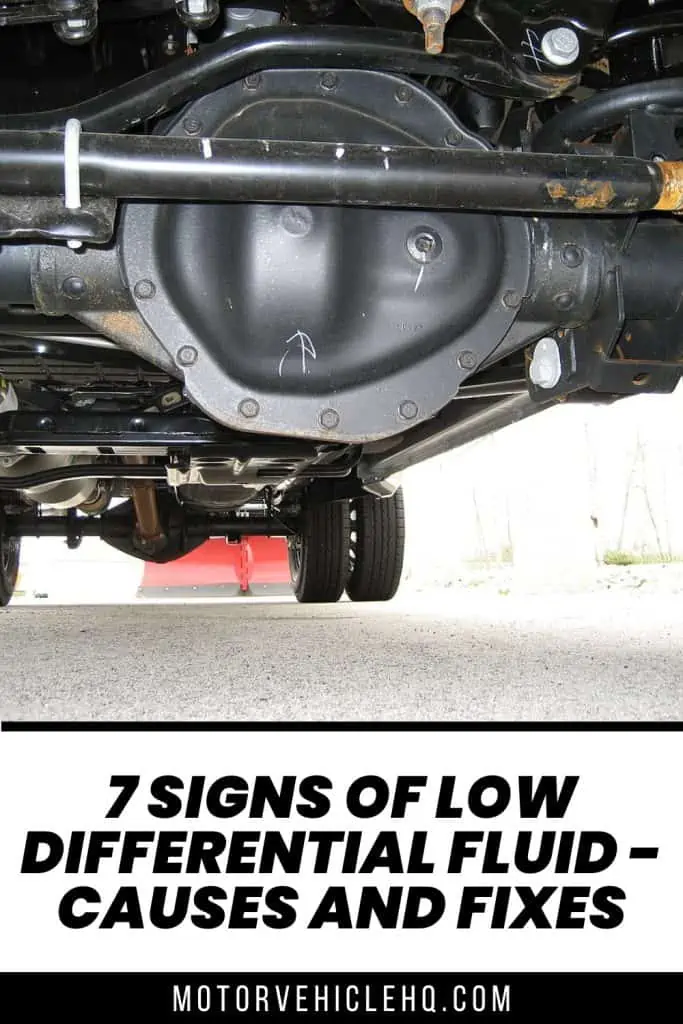
The car’s rear differential by Dana60Cummins / CC BY-SA 3.0

Jim Wicks is the founder of MotorVehicleHQ. With over two decades of experience in the automotive industry and a degree in Automotive Technology, Jim is a certified car expert who has worked in various roles ranging from a mechanic, car dealership manager, to a racing car driver. He has owned more than 20 cars over the past 15 years. Ask him about any vehicle you see on the road and he can tell you the make, model and year. He loves the aesthetics of all things cars, and keeps his vehicles in pristine condition.
In his free time, Jim enjoys getting his hands dirty under the hood of a classic car or taking long drives along the country roads. His favorite car? A 1967 Shelby GT500, a true classic that, according to Jim, “represents the pure essence of American muscle.”
